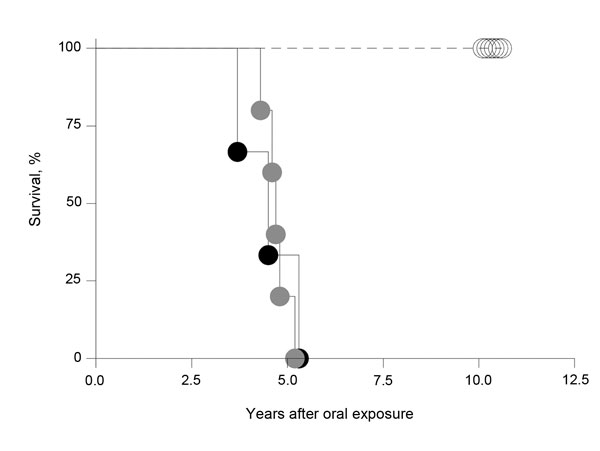Volume 19, Number 5—May 2013
Research
Foodborne Transmission of Bovine Spongiform Encephalopathy to Nonhuman Primates
Figure 2

Figure 2. . Percentage macaques surviving after oral inoculation brain material with or without (mock) bovine spongiform encephalopathy (BSE)–-inducing agent. Macaques exposed to 5 g (gray circles) or 16 g BSE (black circles) on 1 occasion and mock controls (open circles) are shown. The median incubation times for those given 16 g and 5 g BSE each was 4.7 years and 4.6 years, respectively. The difference was statistically not significant.
Page created: April 24, 2013
Page updated: April 24, 2013
Page reviewed: April 24, 2013
The conclusions, findings, and opinions expressed by authors contributing to this journal do not necessarily reflect the official position of the U.S. Department of Health and Human Services, the Public Health Service, the Centers for Disease Control and Prevention, or the authors' affiliated institutions. Use of trade names is for identification only and does not imply endorsement by any of the groups named above.